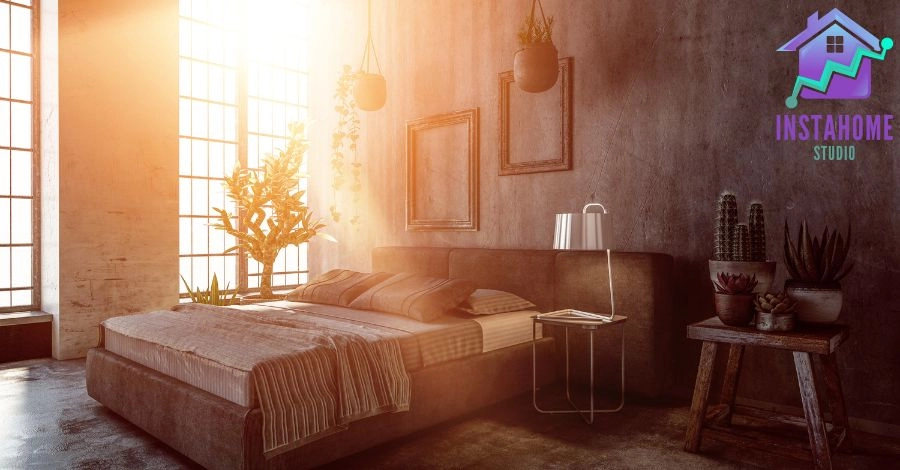What are the types of light? When, which one to choose? In which room a particular type will work best? So many questions and so few answers, but not here. Admittedly, these are not the questions that come to our minds first when we think about buying a few light bulbs. And absolutely nothing strange about it. Because, in fact, for most of us, light is just light. Sometimes brighter sometimes a little less and that’s it.
However, in our humble opinion, the subject is worth getting interested in, because the matter is much more complex than one might expect. It is worth devoting a little time to this issue because the selection of the right light can completely change our perception of specific rooms. Thanks to this, we will be able to give our apartments or houses a little more shine. Sometimes even the smallest details and trifles that we rarely think about can make a big difference. And that’s exactly how it is in this case.
What types of light can we meet?
Well, the answer to this fairly easy question is not because there are so many classifications of light. For this reason, there is little point in dwelling on each of them. Instead, however, we will focus on the most important, i.e. the appearance. It is of the greatest importance to us because it has the greatest impact on the rooms in which we are located and also on ourselves.
Well, in a nutshell, which we will later develop in more detail, light is divided into three main categories, i.e. warm, cold, neutral. However, many people include here a fourth category, i.e. natural light, which does not qualify for the aforementioned three-division. You will learn all the necessary details about each of these types later in the article.
ATTENTION! The choice of light is important not only for aesthetic reasons, but also for typical „life” reasons. Why? Because light directly affects our well-being, or rather our body.
That is why the specific type of light should be appropriately matched to the room. In places where we are active, i.e. in the kitchen or living room, we will choose (at least in theory) a different type of light. Of course, we can also be guided mainly by the aesthetics of the room and match it to our wall decoration (in their case it is especially important).
Color classification of light

Warm light – This particular type of light is characterized, as the name already suggests, by very warm colors. When we see them, the first thing we think of is red, orange or very strong yellow. Of course, this is just our opinion, others may see more orange than yellow and vice versa.
And how does it affect our body? You can call them a typical relaxing light. This means that it is with him that you can rest best after a difficult and hard day. It is a very good choice, e.g. when reading books or taking a nap. In addition, it gives the interiors a kind of coziness and increases the secretion of melatonin, the so-called sleep hormone. Therefore, it is quite obvious that this light will work best in rooms such as the living room or bedroom.
When it comes to typically decorative issues, the situation is as follows. Warm light works best with all decorations with warm colors as well. This applies to decorative paints, structural paints, wall paints, decorative plasters, wallpapers and more. If the decoration is dominated by warm colors such as orange, as is the case with paint with a rust or copper effect. In such situations, warm light will be the best option. Together with the wall, it will create a unique palette of colors that will perfectly harmonize with each other. It is also worth noting that warm light reaches values below 3300 K on the Kelvin scale.
Personally, in this light color I feel best in any room, regardless of whether it is a living room or bedroom.
Cold light – it plays a very important role in our everyday life, if not the most important one, because it is able to greatly facilitate our functioning during the day. How does it work? We already explain. It is a kind of counterbalance to warm light, but in a positive sense. The warm light allowed us to relax and aided our sleep. Cold light, on the other hand, has a strong stimulating effect on us and promotes concentration. Therefore, it will work very well in offices, production halls, workshops and, in general, in our workplaces.
However, if we lead a fairly active lifestyle also at home and we definitely move more than we sit, the cold light will work really well. Nevertheless, we must be very careful with the light intensity levels, because if we decide on too strong and intense, we will be able to feel the impression of overwhelm and excessive fatigue.
And what does the whole situation look like against a strictly decorative background? The situation is then exactly the same as in the case of daylight. Only here instead of warm colors we are dealing with cold colors, we are talking mainly about colors such as white or blue.
That is why it will harmonize and look very well with such wall decorations, which also mainly strike these colors. However, it will also create a great composition with black. We highly recommend this light for decorative paints such as snow or starry night paint. Cold light has the highest value expressed in Kelvin. 4000K to 5300K
Neutral light – it is, in fact, nothing more than the most common compromise between daylight and cold light. How exactly is this neutrality manifested? The fact that neutral light has some properties that are able to stimulate our body, but not as intensely as, for example, cold light, which we will talk about in more detail in the next section. Neutral light does not break any colors and basically does not have a particularly strong effect on us.
That is why it is perfect for rooms and rooms where we do not spend a significant part of our time. Of course, we are talking about places such as hallways and bathrooms. This is a perfect balance.
In terms of aesthetics, however, it is difficult to recommend them anywhere because it is simply bland. It can be said that it is suitable for everything and nothing at the same time. It will not be able to distinguish or enrich what we have done on the walls in any special way. It will simply fulfill the most basic task of light. So it will simply shine to improve our visibility.
In short, when it comes to decor, neutral light is simply for everything and nothing at the same time. Such a painful truth. It’s fine if she stays in this corridor. Neutral light ranges from 3500K to 4300K.
Personally, in this light color I feel best in any room, regardless of whether it is a living room or bedroom.
Natural light – we will say it directly, this is the best light that exists at the moment. Unfortunately, for quite obvious reasons, we are not able to have continuous access to it, nature still limits us here, which is a great pity. Natural light really has a lot of different properties that have a very good effect on our body. It affects a higher well-being, productivity and even the ability to learn. That’s why we should let him into our house as much as possible.
Its advantages, of course, do not end with the positive impact on our body, but it also looks great in terms of wall decorations. Regardless of whether our wall decoration consists mainly of warm or cold colors. It works great with oranges, reds as well as whites and blues. In any case, it will create a unique play of colors and will satisfy you with its effect.
Summary of the article
Well, summarizing our entire article in a few simple and quick sentences, we can summarize the whole message as follows.
If our rooms are dominated by cold colors such as white or blue, it will be better to use cold light.
On the other hand, if we have rooms in which warm colors predominate, such as earth tones, a warm light will be a better decision.
In the case of rooms where we do not spend much time, i.e. corridors, halls or bathrooms, neutral light will be the perfect choice.
What about natural? Let’s just let him in as much as we can and we’ll be fine.





